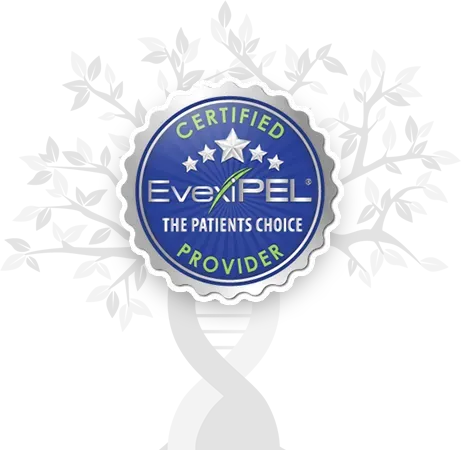MaleTestosteroneTherapy
Tired? Unfocused? Losing your edge?
If you’ve noticed a drop in energy, mental sharpness, strength, motivation, or sex drive — you’re not alone. These are common symptoms of low testosterone, and they can start long before most men expect.
On average, men lose around 1% of their body’s total testosterone every year after turning 30. Low male hormones can cause a variety of problems in an adult man, and low hormone levels may happen for a variety of reasons.
At Solid Wellness & Aesthetics, we help high-performing men recognize the signs, restore their hormone levels, and feel like themselves again.
Ready to find out if low T is holding you back?
Book your consult now
Low Testosterone in Men
Men may have low testosterone for a variety of reasons. Some men are simply born with testosterone levels that are lower than average.
Older men have lower testosterone levels due to the fact that men lose some testosterone as they age. Older men may also be more likely to have health problems that affect hormones.
How Common is Low Testosterone in Men?
Low testosterone in men is more common than you might expect. This is because many men have low testosterone levels without even knowing it. Experts also debate the definition of what constitutes “low testosterone levels”. Yet, it has been estimated that roughly 4 out of 10 men over the age of 40 have low or diminished levels of testosterone.
Insurance companies typically do not acknowledge low testosterone unless a man's level is less than 300. However, studies show that levels less than 900 greatly increase the risk of multiple chronic diseases.
Causes of Low T in Men
Low testosterone, also known as hypogonadism, can be broken down into two categories: primary and secondary.
Primary hypogonadism is when the testes do not produce adequate amounts of testosterone. The causes of primary hypogonadism can range from congenital conditions like Klinefelter’s syndrome to testicle injuries, use of anabolic steroids, and some types of tumors.
Secondary hypogonadism describes low testosterone that occurs as a result of conditions or issues with the pituitary glands. Secondary hypogonadism can also come from congenital conditions or be acquired later in life. Some of the most common acquired causes include kidney failure, chronic alcohol abuse, cirrhosis of the liver, unchecked diabetes and even obesity. In fact, many experts believe that there is a strong connection between obesity and low testosterone.
The type of low testosterone that is often tied to the natural aging process is known as late-onset hypogonadism (LOH). LOH is also more likely in aging men who are overweight.
Symptoms of Low T in Men
Low testosterone can result in a wide variety of debilitating symptoms in men, including:
- Low sex drive
- Loss of motivation
- Feeling "past your prime"
- Erectile dysfunction (ED)
- Enlarged breast tissue (gynecomastia)
- Hot flashes
- Increased body fat
- Mood swings and depressed mood
- Decreased muscle mass
- Memory loss and cognitive decline
Long-Term Health Risks of Low Testosterone in Men
There are many long-term health risks that may occur when low testosterone levels are not treated. For one, men with low testosterone levels are more likely to gain weight and develop weak muscles. Chronic weight gain and obesity can lead to a number of cardiovascular issues and increase the risk of diabetes.
Men with low testosterone levels are also more likely to develop weak bones. They can even develop osteoporosis, which is a serious condition that weakens the bones and increases the risk of fractures.
Erectile Dysfunction in Men
Erectile dysfunction (ED) is characterized by the inability to maintain or achieve an erection. It is often the result of other physiological or psychological issues that should not go unaddressed.
ED may be a sign of a hormone imbalance, heart, blood vessel or kidney disease.
How Common is Erectile Dysfunction?
ED is a relatively common problem. Around 30 million men in the United States suffer from it.
It tends to be more common in older men. However, it sometimes occurs in young men.
Causes and Symptoms of ED
ED is generally caused by poor blood flow to the penis. Low testosterone may also play a role in erectile dysfunction.
The primary symptom is the inability to reach an erection or sustain an erection for sexual intercourse.
Achievement of an erection is an important part of male sexual health. Whether psychological or physiological, men should seek treatment to avoid long-term risks of disease, impaired relationships, and more.
Long-Term Health Risks of ED
The main risk of ED is that it may be a symptom of a more serious condition, such atherosclerosis, heart disease, kidney disease, or type 2 diabetes.
Also, it can ruin a man’s sexual relationship with his partner. This can be difficult on a psychological level as well.
Creams and Gels
Creams and gels have the benefit of being easy to use. However, creams and gels require daily application–sometimes two to three times per day.
Creams and gels can be messy and result in inconsistent dosing if the cream or gel fails to absorb properly, is rubbed off or a dose is missed or forgotten. This can impact the effectiveness of the therapy.
Creams and gels also carry the risk of transferring hormones to anyone who comes in contact with them, even if that means just brushing up against the medication by accident. This can be dangerous for kids, pets, and partners.
Injections
Injections provide immediate effects, and require Biweekly administration. In some cases, your practitioner will administer the injection or you may be provided with a home kit and detailed instructions.
Improper injection practices can have a negative impact. The most common side effects of injections include bruising, pain, and scar tissue at the injection site.
Injections also typically cause “rollercoaster” dosing. The patient may experience intense symptom relief in the period immediately following the injection with dwindling and sometime severe drop off at the end of each treatment cycle.
Pellets
Pellets are hormones compounded into tiny rice-like capsules that are implanted under the skin during a short procedure at your provider’s office.
Pellets are very convenient because you don’t have to remember to take a pill each day, slather on a cream, or properly time an injection.
Much like your natural hormones, pellets provide a steady flow of hormones throughout the treatment cycle, which is between 3 and 6 months depending on your cardiac output, dosing, and gender.
Pellets are often the preferred method of HRT for both patients and providers.
Male Hormone Therapy FAQ
Prostate Health FAQ
Hormone Imbalance in Men
Learn more about treatment options with EvexiPel
We treat men with topical cream, injections as well as cutting edge pellet therapy with EvexiPel. Click to learn more.
Stay Up to Date on Specials and Information Through Our Newsletter
We promise we won't email much, just the good stuff!
Are you ready to explore Hormone therapy or have questions about our services?
Reach out to our friendly team at (317) 799-0450 for information or to schedule a consultation.

